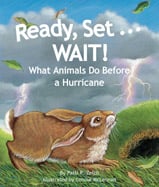Alignment to Standards for WA

| Grade | Number | Standard |
|---|---|---|
| 1 | 3.1.1 | Understands and uses maps and globes to identify major bodies of water and continental land masses. |
| 1 | SS-1.3.1.1 | Understands and uses maps and globes to identify major bodies of water and continental land masses. |
| 1 | SS-1.3.1.1a. | Uses a map or globe to identify the location of the continents and major bodies of water. |
| 1 | SS-1.3.1.1b. | Explains how maps and globes can be used to locate the continents where families live. |
| 2 | SS-2.3.1 | Understands the physical characteristics, cultural characteristics, and location of places, regions, and spatial patterns on the Earthês surface |
| 2 | SS-2.3.1.1 | basic mapping elements such as symbols, compass rose, labels, and a key to read and construct maps that display information about neighborhoods or local communities. |
| 2,3 | 2-3 ES2A | Water plays an essential role in Earth systems, including shaping landforms. |
| 2,3 | 2-3 ES2B | Water can be a liquid or solid and can go back and forth from one form to another. If water is turned into ice and then the ice is allowed to melt, the amount of water will be the same as it was before freezing. Water occurs in the air as rain, snow, hail |
| 2,3 | 2-3 ES2C | Weather changes from day to day and over the seasons. Weather can be described by measurable quantities, such as temperature and precipitation. |
| 2,3 | 2-3 LS2B | All ecosystems change over time as a result of natural causes (e.g., storms, floods, volcanic eruptions, fire). Some of these changes are beneficial for the plants and animals, some are harmful, and some have no effect. |
| 2,3 | 2-3 LS2C | Some changes in ecosystems occur slowly and others occur rapidly. Changes can affect life forms, including humans. |
| 4,5 | 4-5 APPG | Science and technology have greatly improved food quality and quantity, transportation, health, sanitation, and communication. |
| 4,5 | 4-5 LS1B | Plants and animals have different structures and behaviors that serve different functions. |
| 4,5 | 4-5 LS1C | Certain structures and behaviors enable plants and animals to respond to changes in their environment. |
| 4,5 | 4-5 LS1D | Plants and animals have structures and behaviors that respond to internal needs. |
| 4,5 | 4-5 LS2D | Ecosystems can change slowly or rapidly. Big changes over a short period of time can have a major impact on the ecosystem and the populations of plants and animals living there. |
| 4,5 | 4-5 LS3B | Plants and animals inherit many characteristics from their parents. Some inherited characteristics allow organisms to better survive and reproduce in a given ecosystem. |
| 4,5 | 4-5 LS3C | Some characteristics and behaviors result from an individual plantês or animalês interactions with the environment and are not passed from one generation to the next by heredity. |
| K,1 | K-1 LS1B | All plants and animals have various external parts. |
| K,1 | K-1 LS1D | Different animals use their body parts in different ways to see, hear, grasp objects, and move from place to place. |
| K,1 | K-1 LS3B | There are many different types of living things on Earth. Many of them are classified as plants or animals. |
| K,1 | K-1 LS3C.1 | Describe several external features and behaviors of animals that can be used to classify them (e.g., size, color, shape of body parts). |
| K,1 | K-1 LS3C.3 | how pairs (males/females) of plants and/or animals are similar to and different from each other (e.g., cats and dogs both have four legs, but many dogs have longer snouts than cats). |